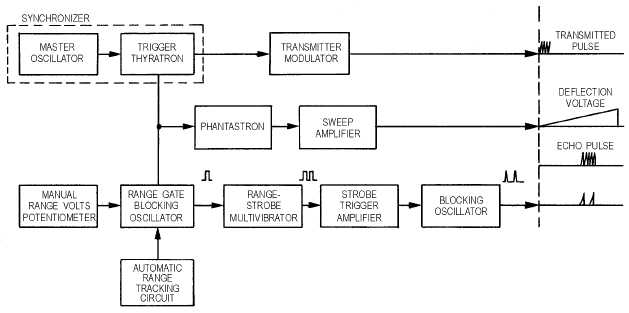3-12
on A-scopes and as concentric circles on ppi scopes. The distance between range marks is generally
determined by the type of equipment and its mode of operation.
In a weapons systems radar that requires extremely accurate target-range data, a movable range
marker may be used. The range marker is obtained from a range-marker generator and may be a movable
range gate or range step. When a ppi scope is used, a range circle of adjustable diameter may be used to
measure range accurately. In some cases, movement of the range marker is accomplished by adjusting a
calibrated control from which range readings are obtained.
The following discussion describes the operation of three types of range-marker generators: the
RANGE-GATE GENERATOR, the RANGE-MARKER GENERATOR, and the RANGE-STEP
GENERATOR. The range-gate generator, used in conjunction with a blocking oscillator, generates a
movable range gate. The range-marker generator and the range-step generator, used in conjunction with
an astable multivibrator, generate fixed range marks and a movable range step, respectively.
Range-Gate Generator
Figure 3-11 shows a simplified block diagram of a typical range-gate generator. The pulse-repetition
frequency is controlled by a master oscillator, or multivibrator, in which the output is coupled to a trigger
thyratron (both in the synchronizer). The output of the trigger thyratron is used to trigger the radar
modulator and the scope sweep circuits, thus starting the transmitter pulse and the range sweep at the
same instant, referred to as time T0.
Figure 3-11.—Range-gate generator.
The PHANTASTRON in the sweep circuits is a variable timing circuit that supplies a sweep
sawtooth to the sweep amplifier. The width of the gate and sawtooth is dependent upon the range selected
by the radar operator.
The range-gate circuit receives its input pulse from the trigger thyratron and generates a delayed
range-gate pulse. The delay of this pulse from time T0 is dependent on either the range of the target when



